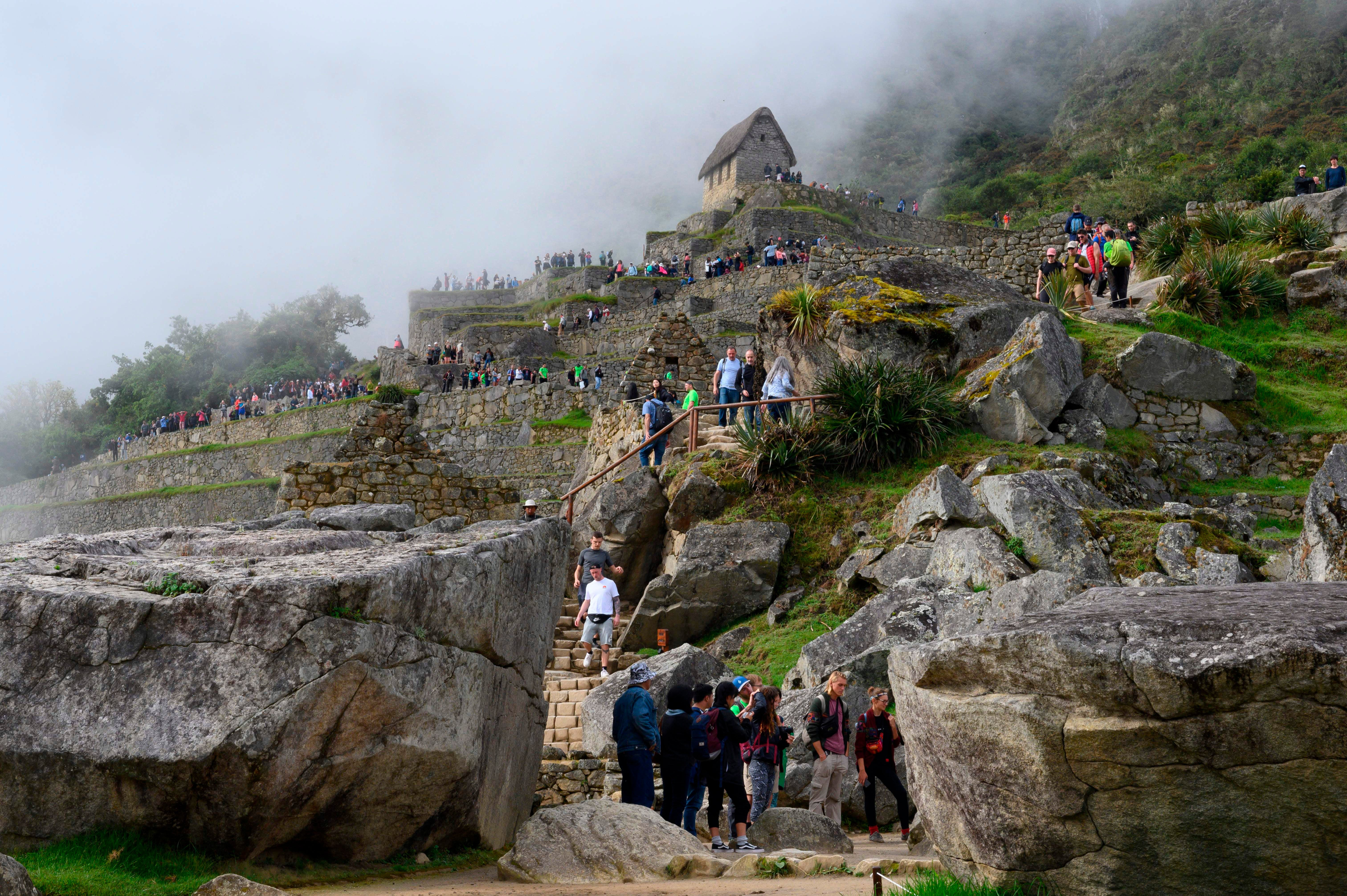- Travel
- News & Advice
Standoff over bus service recently stranded some 1,400 tourists and prompted authorities to deploy emergency evacuation trains
Maroosha MuzaffarMonday 24 November 2025 09:19 GMTComments
 CloseRelated: Machu Picchu tourists stranded as violent protests continue in Peru
CloseRelated: Machu Picchu tourists stranded as violent protests continue in Peru
Sign up to Simon Calder’s free travel email for expert advice and money-saving discounts
Get Simon Calder’s Travel email
Get Simon Calder’s Travel email
 Email*SIGN UP
Email*SIGN UPI would like to be emailed about offers, events and updates from The Independent. Read our Privacy notice
Machu Picchu’s position as Peru’s flagship tourist attraction is under strain amid a deepening dispute over control of the buses that carry visitors to the ancient Inca citadel.
The standoff recently stranded some 1,400 tourists and prompted authorities to deploy emergency evacuation trains.
For three decades, Consettur has operated the 20-minute bus route from Aguas Calientes, transporting roughly 4,500 people a day to the mountaintop site. The alternative – a steep two-hour hike – is unfeasible for most visitors. But Consettur’s long-held licence expired in September, opening the door to a rival operator, San Antonio de Torontoy, and igniting a fierce backlash from local groups who claimed the bidding process lacked transparency.
Cristian Alberto Caballero Chacon, Consettur’s head of operations, acknowledges recent tensions, saying “there have been some conflicts between people from different communities here”.
Protesters blocked the railway leading into Aguas Calientes, forcing officials to clear the tracks and evacuate stranded travellers.
Aguas Calientes is a remote, roadless town accessible mainly by train, making it the crucial transit point for visitors heading to Machu Picchu. Buses there help travellers avoid a steep, multi-mile uphill hike to the site. Recent protests disrupted this system by blocking the train tracks, the only practical link to Cusco and the Sacred Valley, even prompting a US travel alert.
The dispute erupted on 14 September, soon after the authorities revoked Consettur’s 30-year concession to run the Machu Picchu shuttle buses, and awarded it to San Antonio de Torontoy, the rival operator. The decision triggered clashes among local tourism businesses, leading to blockades and a suspension of services that stranded hundreds of international visitors in Aguas Calientes, the remote mountain town that serves as the gateway to the 15th-century Inca site.
Several locals argued that Consettur had enjoyed a de facto monopoly for years, and that power was simply shifting to another exclusive operator.
Tickets for the lucrative bus trip cost $24 for foreigners and $15 for Peruvians.
 open image in galleryFile. A view of the Machu Picchu complex (AFP via Getty)
open image in galleryFile. A view of the Machu Picchu complex (AFP via Getty)Amid ongoing legal challenges, Consettur continues to run its fleet while San Antonio de Torontoy awaits final approval.
“The owners of the business have been running the company for the past 30 years, and they are people who come from around here,” Mr Caballero was quoted as saying by the BBC. “This is not a monopoly.”
Consettur “is made up of 12 different companies with various partners”, including the district council, which holds a 38 per cent stake, he added.
The tensions unfolded against a backdrop of high visitor costs and uneven distribution of tourism revenue.
Travellers must first take a train to Aguas Calientes – a journey costing between $140 and $2,000 – before paying a $57 entrance fee to the site.
Nick Stanziano, the Lima-based CEO of tour operator SA Expeditions, which runs regular hiking trips to Machu Picchu, told Outside magazine that Peru “walks a fine line between respecting Indigenous forms of social organisation and balancing them with modern structures of municipal civil society and private industry”.
He added: “This tension has long shaped decision-making at Machu Picchu, but the latest conflict reveals a deeper issue. Overlapping local and regional interests continue to insert themselves into the management … without the technical expertise or long-term planning such a responsibility demands.”
 open image in galleryTourists visit the Machu Picchu complex (AFP via Getty)
open image in galleryTourists visit the Machu Picchu complex (AFP via Getty)Australian tourist Annalise Jaksic said: “We thought it was one train… and we thought if there was any more transport to get up there it would all be included.” Her friend Todd Carland added that securing entry tickets “was a nightmare for us”.
Local officials share these frustrations. Aguas Calientes mayor Elvis La Torre says only 10 per cent of entrance-ticket revenue stays in the region, arguing that more funding is needed for infrastructure and basic services.
Back in Aguas Calientes, Mr Caballero says Consettur is open to coexistence with San Antonio de Torontoy. “If they are given the final approval we don’t have a problem with working with them. We won’t stop them.”
Meanwhile, Jean-Paul de la Fuente, the director of the New 7 Wonders of the World organisation, earlier noted: “The situation at Machu Picchu has been brewing for many years, and we have been following it with concern.”
“Over the past five years, we have presented concrete proposals to the Peruvian authorities for a comprehensive solution… Unfortunately, nothing happened, and, as always, when you pretend a problem doesn’t exist, it only gets worse,” he told Outside magazine.
The bus turmoil unfolded the same week the New 7 Wonders of the World organisation warned that Machu Picchu risked losing its “credibility” as a world wonder. And Peru’s ministry of culture noted in a statement that “Unesco is the only competent body to promote, worldwide, the identification, protection, and preservation of cultural and natural heritage considered to be of outstanding universal value to humanity”.
More about
PeruMachu PicchuIncaTouristsJoin our commenting forum
Join thought-provoking conversations, follow other Independent readers and see their replies
Comments


